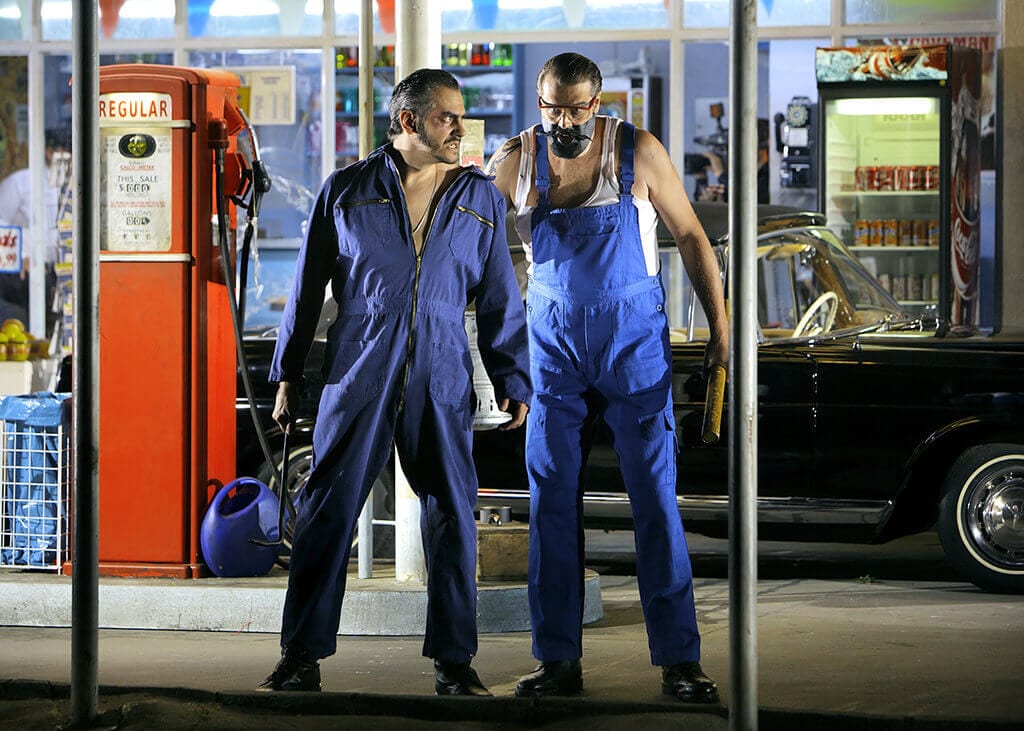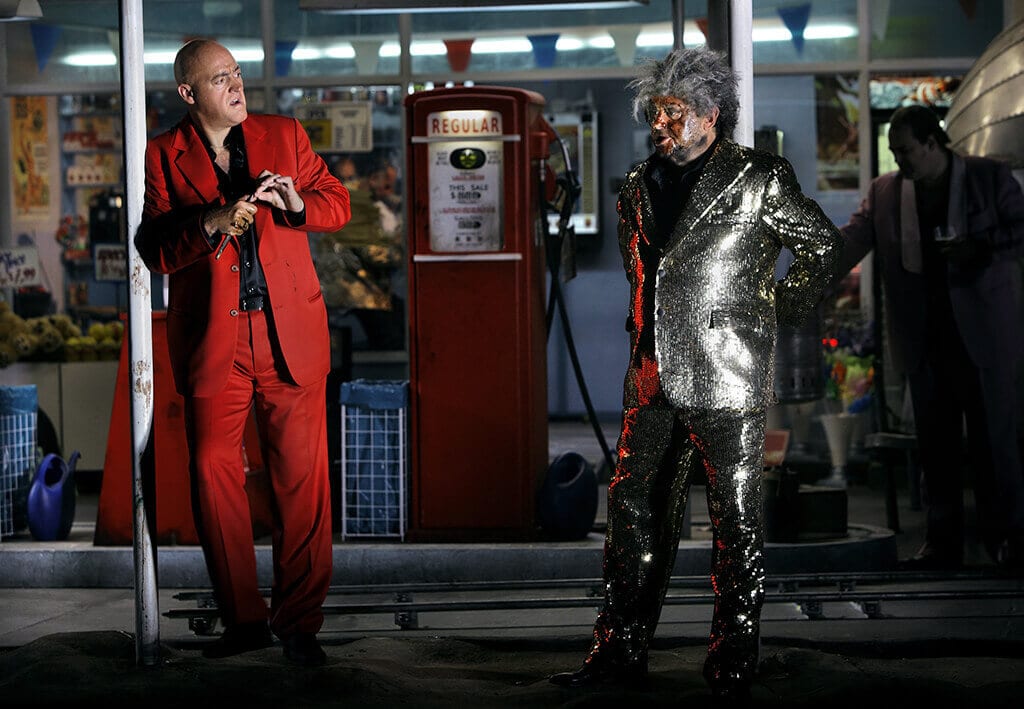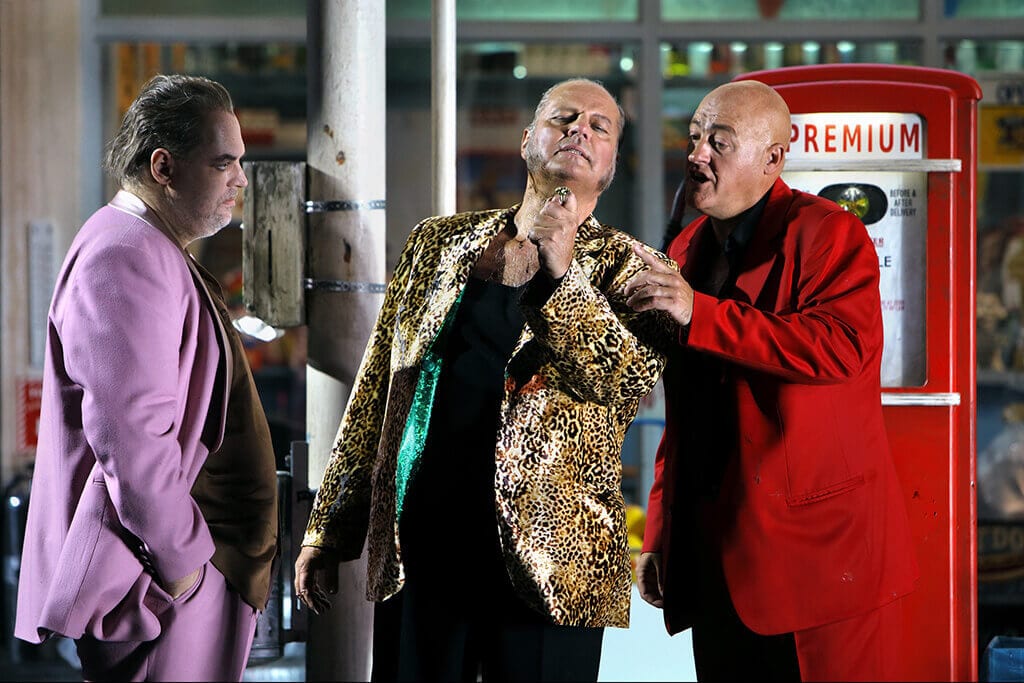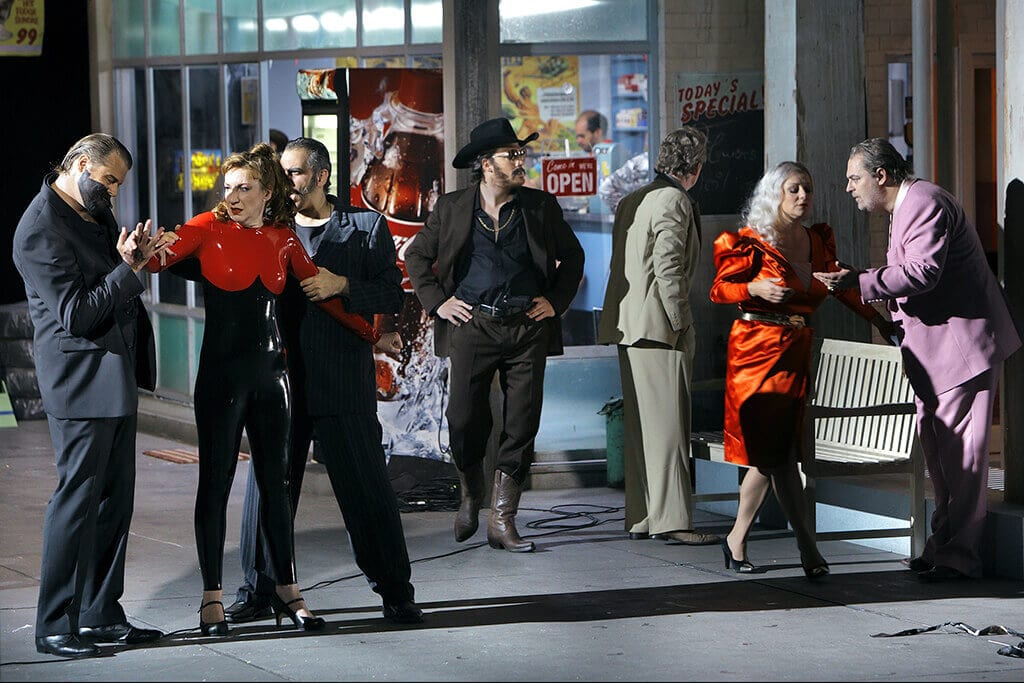A run-down and slightly faded 1950s motel on America’s famed Route 66, aptly named ‘Golden’, provides a stylish and authentic setting for Frank Castorf’s controversial production of Das Rhinegold, first seen in 2013 as part of the complete Ring cycle to celebrate the 200th anniversary of Wagner’s birth.
And the boss of the Golden is none other than Wotan (authoritatively sung by Wolfgang Koch) who comes over as a Mafia-type figure seen in the early stages of the opera enjoying a ‘threesome’ at the motel with his wife and sister-in-law, Fricka and Freia (Claudia Mahnke/Allison Oakes).
Gangland B-movie world is rife in this all-action production where gangsters and their molls replaced Nordic gods and so on. Daniel Schmutzhard as Donner fits perfectly his role looking shady wearing a Stetson armed with a Colt 49 while the giants Fafner and Fasolt (Andreas Hörl/Wilhelm Schwinghammer) are portrayed as ‘grease-monkeys’ kitted out in true Detroit fashion with blue dungarees.
A deconstructionist in every sense of the word, Castorf brazenly shifts the scenario from its traditional romantic Rhineland setting to the rough-and-tough world of oil prospecting setting the scene in the USA, Germany and the Soviet Union. Therefore, ‘black gold’ becomes the treasured Nibelung hoard.
Castorf captures in minute detail, too, the very essence of the free-and-easy decade of the 1950s when oil supplies were limitless to Americans cruising aimlessly around in their gas-guzzling cadillacs as if there was no tomorrow. But tomorrow always comes as the gods holed up in Valhalla find out to their almighty cost.
A Mercedes-Benz chrome-trimmed black convertible provided a most distinctive stage prop and the favoured transport of the Rhinemaidens who are brightly-dressed curvaceous young blondes tantalising poor old Alberich to bursting-point with their seductive charms. The famed trio – Mirella Hagen (Woglinde), Julia Rutigliano (Wellgunde) and Anna Lapkovskaja (Flosshilde) – proved an excellent choice.
All of the sets are ingeniously designed by Serbian-born artist Aleksandar Denić and constructed on a massive revolving stage built on several levels while Adriana Braga Peretzki’s costumes, strikingly colourful, fitted their characters’ personalities to a tee. For instance, when Erda (Nadine Weissmann) arrives on the scene warning Wotan of impending doom and gloom she makes quite an entrance dressed in a striking gold-lamé tight-fitting dress adorned by a white mink coat.
Castorf adds a nice quirky touch to the underground city of Nibelheim, too, by putting it on wheels. After all, America is a car-driven society, so what better way to represent Nibelheim than by a silver-plated Air Stream double-wheeled mobile trailer which leisurely rode America’s iconic Route 66.
Rainer Casper completed the creative team flooding the stage with an array of rainbow-coloured lighting while Andreas Deinert and Jens Crull produced some interesting video work and one such sequence which caught one’s imagination is Alberich’s boastful scene about the powers of the Tarnhelm. As he turns himself into a giant snake and then a croaking toad, these amphibious creatures are immediately caught on camera and instantly beamed on screen.
Maestro Petrenko’s command and reading of Wagner’s score is excellent and he energised his players in some formidable playing especially in the Gods’ Entrance into Valhalla.






